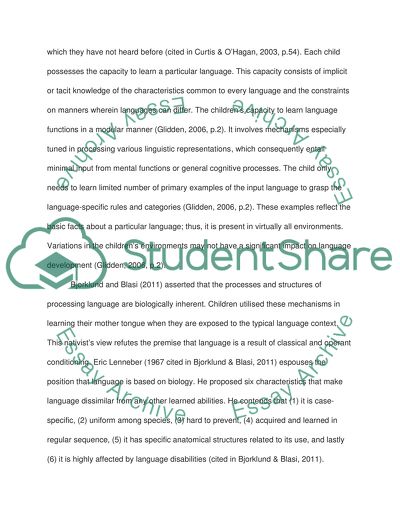Cite this document
(“Is Language Development an Innately or Environmentally Guided Process Essay”, n.d.)
Is Language Development an Innately or Environmentally Guided Process Essay. Retrieved from https://studentshare.org/psychology/1441447-evaluate-the-belief-that-language-development-is
Is Language Development an Innately or Environmentally Guided Process Essay. Retrieved from https://studentshare.org/psychology/1441447-evaluate-the-belief-that-language-development-is
(Is Language Development an Innately or Environmentally Guided Process Essay)
Is Language Development an Innately or Environmentally Guided Process Essay. https://studentshare.org/psychology/1441447-evaluate-the-belief-that-language-development-is.
Is Language Development an Innately or Environmentally Guided Process Essay. https://studentshare.org/psychology/1441447-evaluate-the-belief-that-language-development-is.
“Is Language Development an Innately or Environmentally Guided Process Essay”, n.d. https://studentshare.org/psychology/1441447-evaluate-the-belief-that-language-development-is.


